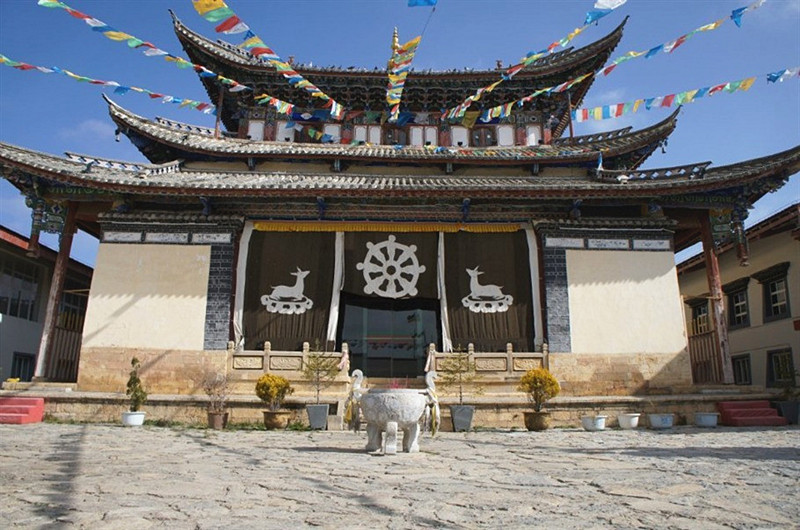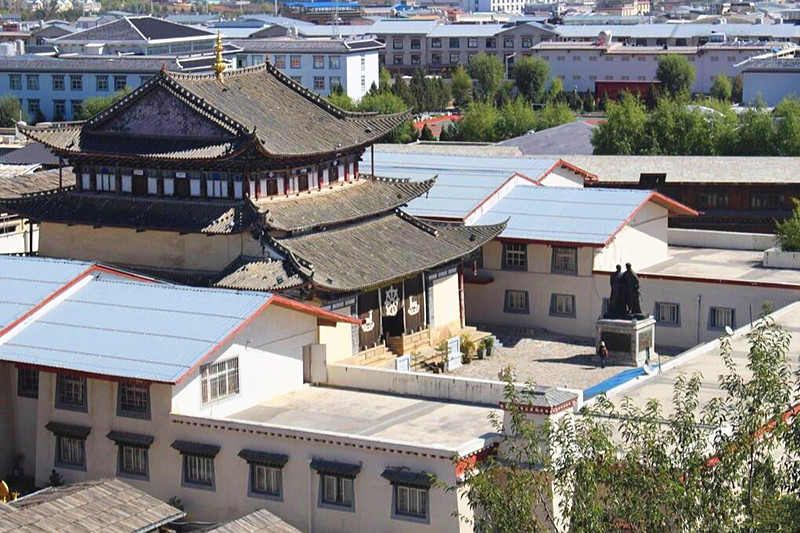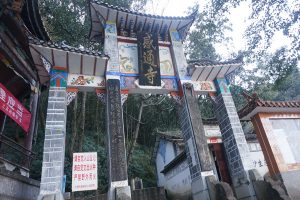Zhongxinzhen Gongtang in Shangri-La, Diqing
Introduction
Zhongxinzhen Gongtang (中心镇公堂) is located in Moonlight Square (月光广场) of Dukezong Ancient Town (独克宗古城) in Shangri-La (香格里拉), Diqing Tibetan Autonomous Prefecture (迪庆藏族自治州), Yunnan Province (云南省). The Tibetan name “Duke Ruiba Xiakang” translates to “Stone Village Tibetan Scripture Hall.” Established in the 21st year of the Kangxi Emperor’s reign (1682), it covers an area of over 4,000 square meters and serves as a venue for ancestral worship, meetings, and handling marriage and funeral ceremonies for the local Tibetan community.
Architectural Structure
Zhongxinzhen Gongtang consists of a main hall, east and west wings, a main gate, surrounding walls, and four corner watchtowers. The main hall features a Han-style three-tiered roof and a Tibetan-style interior layout, reflecting the fusion of diverse cultural influences. The walls of the main hall and the inner walls of the second floor are adorned with nearly 200 square meters of Tibetan Buddhist murals, showcasing the artistic skills of the late Qing Dynasty and the aesthetic preferences of the Tibetan people.
Historical Development
- 1682: Construction of Zhongxinzhen Gongtang begins.
- 1853: The hall is rebuilt.
- 1869: The structure is destroyed.
- 1882: Local residents fund its reconstruction.
- 1936: The Red Army establishes a command center here during the Chinese Civil War.
- 1983: Repairs are made, including roof restoration and wall maintenance.
- 2000: The State Administration of Cultural Heritage allocates 300,000 yuan for thorough repairs.
- 2006: The hall is transferred to the management of the Dukezong Ancient Town Management Committee.
Main Structures
Main Hall
The main hall faces south and is a two-story building with a wooden structure and a three-tiered roof covered in Han-style blue tiles. The hall is supported by 40 Tibetan-style Vajra pillars arranged in a square layout, with two central pillars reaching a height of 16 meters. Inside, a statue of Avalokiteshvara (观音) with a thousand hands and eyes is enshrined, with Tibetan scripture cabinets flanking it.
Wings
- West Wing: Traditional Tibetan “panel-style” timber structure.
- East Wing: A combination of styles from Tibetan, Han, and Bai (白族) ethnic groups, constructed in a timber “shop” style.
Cultural Significance
Resistance Against Bandits
In 1931, when the town faced bandit attacks, local self-defense forces bravely defended Zhongxinzhen Gongtang for 34 days, protecting valuable artifacts and the lives of local residents.
Zhongdian Conference
On May 3, 1936, the Red Army convened the Zhongdian Conference in the hall, outlining seven political disciplines to respect the rights and customs of Tibetan people.
Artistic and Scientific Value
Zhongxinzhen Gongtang’s Tibetan Buddhist murals are rich in composition, color coordination, and thematic diversity, representing late Qing ethnic artistic skills. The preservation and study of these murals contribute significantly to cultural heritage conservation.
Visiting Information
Location
Zhongxinzhen Gongtang is situated in Moonlight Square (月光广场), Dukezong Ancient Town (独克宗古城), Shangri-La (香格里拉), Diqing Tibetan Autonomous Prefecture (迪庆藏族自治州), Yunnan Province (云南省).
How to Get There
- By Car: Depart from Shangri-La Station (香格里拉站) and travel via Xinhui Ring Road (西内环路) and Kangzhu Avenue (康珠大道) to Zhongxinzhen Gongtang, approximately 7.5 kilometers away.
Travel Tips
- Best Time to Visit: Spring and summer months are ideal for enjoying the local flora and cultural activities.
- Local Customs: Respect the local Tibetan customs and practices, especially during ceremonies.
- Photography: Ask for permission before photographing people or sacred sites.
- Cultural Awareness: Familiarize yourself with the local culture and history to enrich your visit.

















